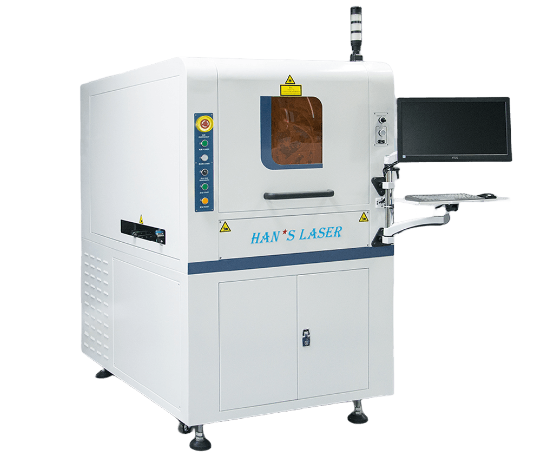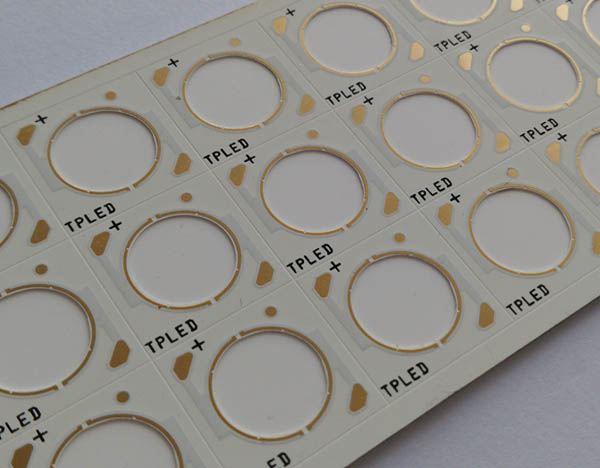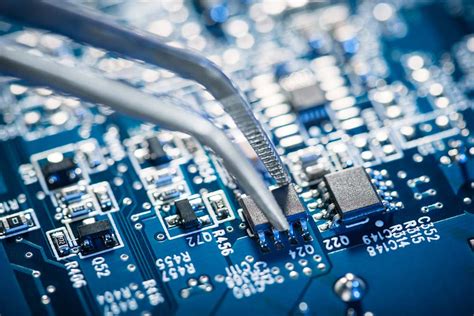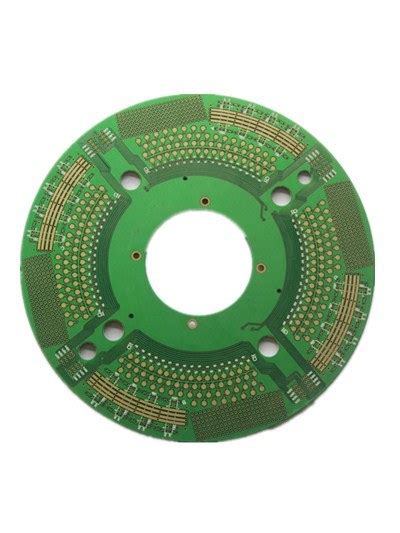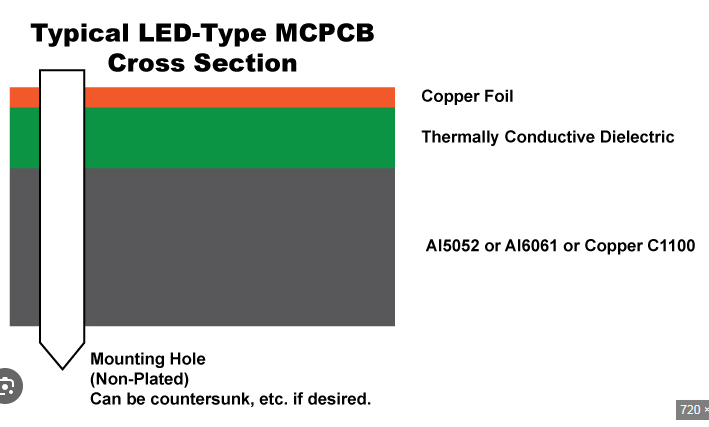Rogers 5880 pcb
Advantages Of Using Rogers 5880 PCB In High-Frequency Applications
Rogers 5880 PCB, a high-frequency laminate material, has garnered significant attention in the electronics industry due to its exceptional performance characteristics. One of the primary advantages of using Rogers 5880 PCB in high-frequency applications is its low dielectric constant.
This property is crucial for maintaining signal integrity, as it minimizes signal loss and ensures that the transmission of high-frequency signals remains efficient and reliable. Consequently, devices that rely on high-frequency signals, such as radar systems, satellite communications, and advanced wireless networks, benefit immensely from the use of Rogers 5880 PCB.
In addition to its low dielectric constant, Rogers 5880 PCB exhibits a low dissipation factor.
This attribute is particularly important in high-frequency applications because it reduces the amount of energy lost as heat. By minimizing energy loss, the PCB ensures that more power is available for signal transmission, thereby enhancing the overall performance of the device. Furthermore, the low dissipation factor contributes to the longevity and reliability of the electronic components, as it reduces the thermal stress on the materials.
Another significant advantage of Rogers 5880 PCB is its excellent thermal stability.
High-frequency applications often generate substantial amounts of heat, which can adversely affect the performance and lifespan of electronic components. Rogers 5880 PCB is designed to withstand high temperatures without degrading, ensuring that the device operates efficiently even under extreme conditions. This thermal stability is particularly beneficial for applications in aerospace, military, and automotive industries, where devices are often exposed to harsh environments.
Moreover, Rogers 5880 PCB offers superior dimensional stability.
This means that the material maintains its shape and size even when subjected to varying temperatures and mechanical stresses. Dimensional stability is critical in high-frequency applications because any deformation or expansion of the PCB can lead to signal distortion and reduced performance. By maintaining its structural integrity, Rogers 5880 PCB ensures consistent and reliable signal transmission, which is essential for the proper functioning of high-frequency devices.
The material’s low moisture absorption rate is another noteworthy advantage.
In high-frequency applications, even a small amount of moisture can significantly impact the performance of the PCB by altering its electrical properties. Rogers 5880 PCB’s low moisture absorption rate ensures that the material remains stable and performs consistently, even in humid or wet conditions. This characteristic is particularly advantageous for applications in marine and outdoor environments, where exposure to moisture is inevitable.
Furthermore, Rogers 5880 PCB is known for its ease of fabrication.
The material can be easily processed using standard PCB manufacturing techniques, which simplifies the production process and reduces costs. This ease of fabrication also allows for greater design flexibility, enabling engineers to create complex and intricate circuit designs that meet the specific requirements of high-frequency applications.
In conclusion, the advantages of using Rogers 5880 PCB in high-frequency applications are manifold. Its low dielectric constant and dissipation factor ensure efficient and reliable signal transmission, while its excellent thermal and dimensional stability guarantee consistent performance under extreme conditions. Additionally, the material’s low moisture absorption rate and ease of fabrication further enhance its suitability for high-frequency applications. As a result, Rogers 5880 PCB has become a preferred choice for engineers and designers working on advanced electronic devices that require superior performance and reliability.
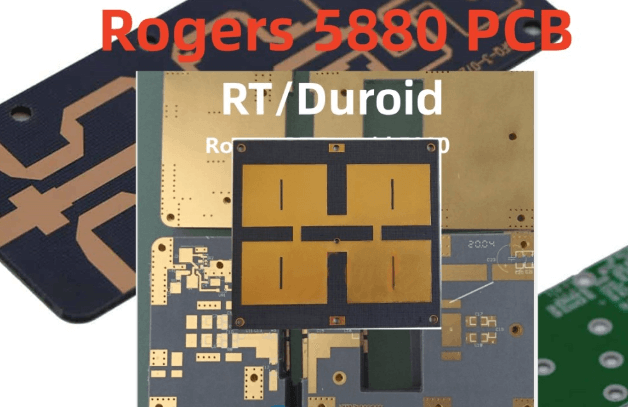
Design Considerations For Rogers 5880 PCB
When designing a printed circuit board (PCB) using Rogers 5880 material, several critical considerations must be taken into account to ensure optimal performance and reliability. Rogers 5880 is a high-frequency laminate known for its low dielectric constant and low loss tangent, making it an ideal choice for high-speed and high-frequency applications. However, its unique properties necessitate a thorough understanding of its characteristics and the implications for PCB design.
First and foremost, the dielectric constant (Dk) of Rogers 5880 is notably low, typically around 2.2.
This low Dk is advantageous for maintaining signal integrity at high frequencies, as it minimizes signal delay and dispersion. Consequently, designers must carefully calculate the impedance of transmission lines to match the specific requirements of their application. Impedance control is crucial in high-frequency circuits to prevent signal reflections and losses, which can degrade performance. Therefore, precise modeling and simulation tools should be employed to predict the behavior of the transmission lines accurately.
In addition to impedance control, the low loss tangent of Rogers 5880, typically around 0.0009, is another significant factor.
This property ensures minimal signal attenuation, which is essential for maintaining signal strength over long distances. However, to fully leverage this advantage, designers must pay close attention to the layout and routing of high-frequency signals. Minimizing the length of signal paths and avoiding sharp bends can help reduce losses and maintain signal integrity.
Thermal management is another critical aspect to consider when designing with Rogers 5880.
Although this material has excellent electrical properties, its thermal conductivity is relatively low compared to other PCB materials. This characteristic can lead to heat buildup, especially in high-power applications. To mitigate this issue, designers should incorporate adequate thermal vias and heat sinks to dissipate heat effectively. Additionally, careful placement of components and consideration of their thermal profiles can help manage heat distribution across the PCB.
Mechanical stability is also a key consideration. Rogers 5880 exhibits a relatively low coefficient of thermal expansion (CTE), which means it expands and contracts less with temperature changes compared to other materials.
This property is beneficial for maintaining dimensional stability and reducing the risk of mechanical stress and warping. However, it also necessitates careful selection of compatible materials for multilayer PCBs to ensure consistent performance across different layers.
Furthermore, the manufacturing process for Rogers 5880 PCBs requires special attention.
The material’s softness and flexibility can pose challenges during fabrication, such as drilling and plating. Therefore, it is essential to work with experienced manufacturers who are familiar with the specific requirements of Rogers 5880. Proper handling and processing techniques, such as controlled drilling speeds and careful lamination procedures, are crucial to avoid defects and ensure high-quality PCBs.
In conclusion, designing a PCB with Rogers 5880 material involves a comprehensive understanding of its unique properties and their implications for high-frequency and high-speed applications. By carefully considering factors such as impedance control, signal integrity, thermal management, mechanical stability, and manufacturing processes, designers can fully exploit the advantages of Rogers 5880 to create reliable and high-performance PCBs. Employing advanced simulation tools and collaborating with experienced manufacturers can further enhance the design process, ensuring that the final product meets the stringent requirements of modern electronic applications.
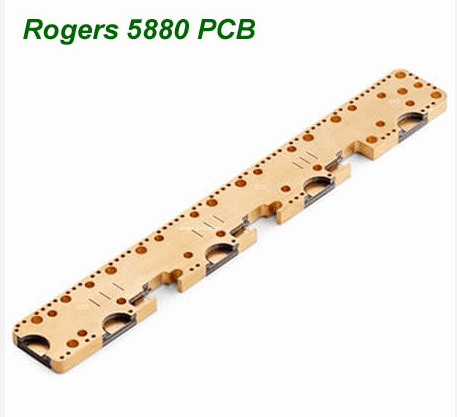
Comparing Rogers 5880 PCB With Other High-Frequency Materials
Rogers 5880 PCB is a high-frequency laminate material renowned for its exceptional performance in demanding applications. When comparing Rogers 5880 PCB with other high-frequency materials, several key factors come into play, including dielectric constant, loss tangent, thermal stability, and mechanical properties. Understanding these differences is crucial for engineers and designers who aim to optimize the performance of their electronic devices.
To begin with, the dielectric constant (Dk) of a material is a critical parameter that influences signal integrity and impedance control.
Rogers 5880 PCB boasts a low dielectric constant of approximately 2.2, which is significantly lower than many other high-frequency materials. This low Dk value ensures minimal signal distortion and allows for faster signal propagation, making it ideal for high-speed digital and RF applications. In contrast, materials such as FR-4, commonly used in standard PCBs, have a higher dielectric constant, typically around 4.5, which can lead to greater signal loss and reduced performance in high-frequency applications.
Moreover, the loss tangent, or dissipation factor, is another essential characteristic to consider.
Rogers 5880 PCB exhibits an exceptionally low loss tangent of 0.0009 at 10 GHz, indicating minimal energy loss as the signal travels through the material. This low dissipation factor is particularly advantageous for applications requiring high signal fidelity and low insertion loss, such as microwave circuits and antennas. On the other hand, materials like FR-4 have a higher loss tangent, often around 0.02, which can result in significant signal attenuation and reduced efficiency in high-frequency circuits.
In addition to electrical properties, thermal stability is a vital aspect when comparing high-frequency materials. Rogers 5880 PCB demonstrates excellent thermal stability with a coefficient of thermal expansion (CTE) closely matched to that of copper. This compatibility minimizes the risk of delamination and ensures reliable performance over a wide temperature range. Conversely, other materials may exhibit higher CTE values, leading to potential mechanical stresses and reliability issues in temperature-varying environments.
Furthermore, mechanical properties such as rigidity and flexibility are important considerations.
Rogers 5880 PCB is known for its robust mechanical strength, which provides durability and resistance to mechanical stress during manufacturing and operation. This makes it suitable for applications where mechanical stability is paramount. In comparison, some high-frequency materials may offer less mechanical strength, potentially compromising the integrity of the PCB in demanding conditions.
Additionally, the ease of fabrication and processing is a practical factor that influences material selection.
Rogers 5880 PCB is compatible with standard PCB manufacturing processes, allowing for straightforward integration into existing production lines. This compatibility reduces manufacturing complexity and costs, making it an attractive choice for high-frequency applications. In contrast, some alternative materials may require specialized processing techniques, leading to increased production time and expenses.
In conclusion, Rogers 5880 PCB stands out among high-frequency materials due to its low dielectric constant, minimal loss tangent, excellent thermal stability, and robust mechanical properties. These attributes make it a preferred choice for engineers and designers seeking to achieve superior performance in high-speed digital and RF applications. While other materials may offer certain advantages, the comprehensive benefits of Rogers 5880 PCB make it a compelling option for a wide range of high-frequency electronic devices.

Manufacturing Challenges And Solutions For Rogers 5880 PCB
Rogers 5880 PCB, a high-frequency laminate material, is widely recognized for its exceptional electrical performance and low dielectric loss, making it a preferred choice for high-frequency applications such as microwave and RF circuits. However, the manufacturing of Rogers 5880 PCBs presents several challenges that require specialized solutions to ensure optimal performance and reliability.
One of the primary challenges in manufacturing Rogers 5880 PCBs is the material’s inherent softness and flexibility.
Unlike traditional FR-4 materials, Rogers 5880 is composed of PTFE (polytetrafluoroethylene) reinforced with glass microfibers, which imparts unique mechanical properties. This softness can lead to difficulties during the drilling process, as the material tends to deform under mechanical stress. To address this issue, manufacturers often employ specialized drilling techniques, such as using sharp, high-speed drills and optimizing feed rates to minimize deformation and ensure clean, precise holes.
Another significant challenge is the material’s high coefficient of thermal expansion (CTE).
Rogers 5880 exhibits a higher CTE compared to conventional PCB materials, which can lead to issues with dimensional stability during thermal cycling. This is particularly critical in applications where the PCB is subjected to varying temperatures. To mitigate this, manufacturers may use low-CTE substrates or incorporate thermal management strategies, such as using heat sinks or thermal vias, to maintain dimensional stability and prevent delamination or warping.
The adhesion of copper to the Rogers 5880 substrate also poses a challenge.
The PTFE base material has a low surface energy, making it difficult for copper to adhere effectively. To enhance adhesion, surface treatment processes such as plasma etching or chemical roughening are employed. These treatments increase the surface roughness of the PTFE, providing better mechanical interlocking and improving the bond strength between the copper and the substrate. Additionally, the use of specialized adhesives or bonding films can further enhance the adhesion properties.
Furthermore, the etching process for Rogers 5880 PCBs requires careful control.
The material’s chemical resistance and low dielectric constant necessitate precise etching parameters to achieve accurate and consistent trace widths. Manufacturers often use advanced photolithography techniques and employ etchants specifically formulated for PTFE-based materials. This ensures that the etching process produces high-quality, well-defined traces without undercutting or over-etching, which could compromise the electrical performance of the PCB.
In addition to these technical challenges, the cost of Rogers 5880 material is another consideration.
The specialized nature of the material and the additional processing steps required for its fabrication contribute to higher production costs compared to standard FR-4 PCBs. However, the superior electrical performance and reliability offered by Rogers 5880 often justify the investment, particularly in high-frequency applications where signal integrity is paramount.
To overcome these manufacturing challenges, collaboration between PCB designers and manufacturers is essential. Designers must consider the unique properties of Rogers 5880 during the design phase, optimizing layouts and specifying appropriate materials and processes. Manufacturers, on the other hand, must leverage their expertise and employ advanced techniques to ensure the successful fabrication of Rogers 5880 PCBs.
In conclusion, while the manufacturing of Rogers 5880 PCBs presents several challenges, specialized solutions and careful process control can effectively address these issues. By understanding the material’s properties and employing appropriate techniques, manufacturers can produce high-quality PCBs that meet the stringent requirements of high-frequency applications, ultimately delivering superior performance and reliability.

